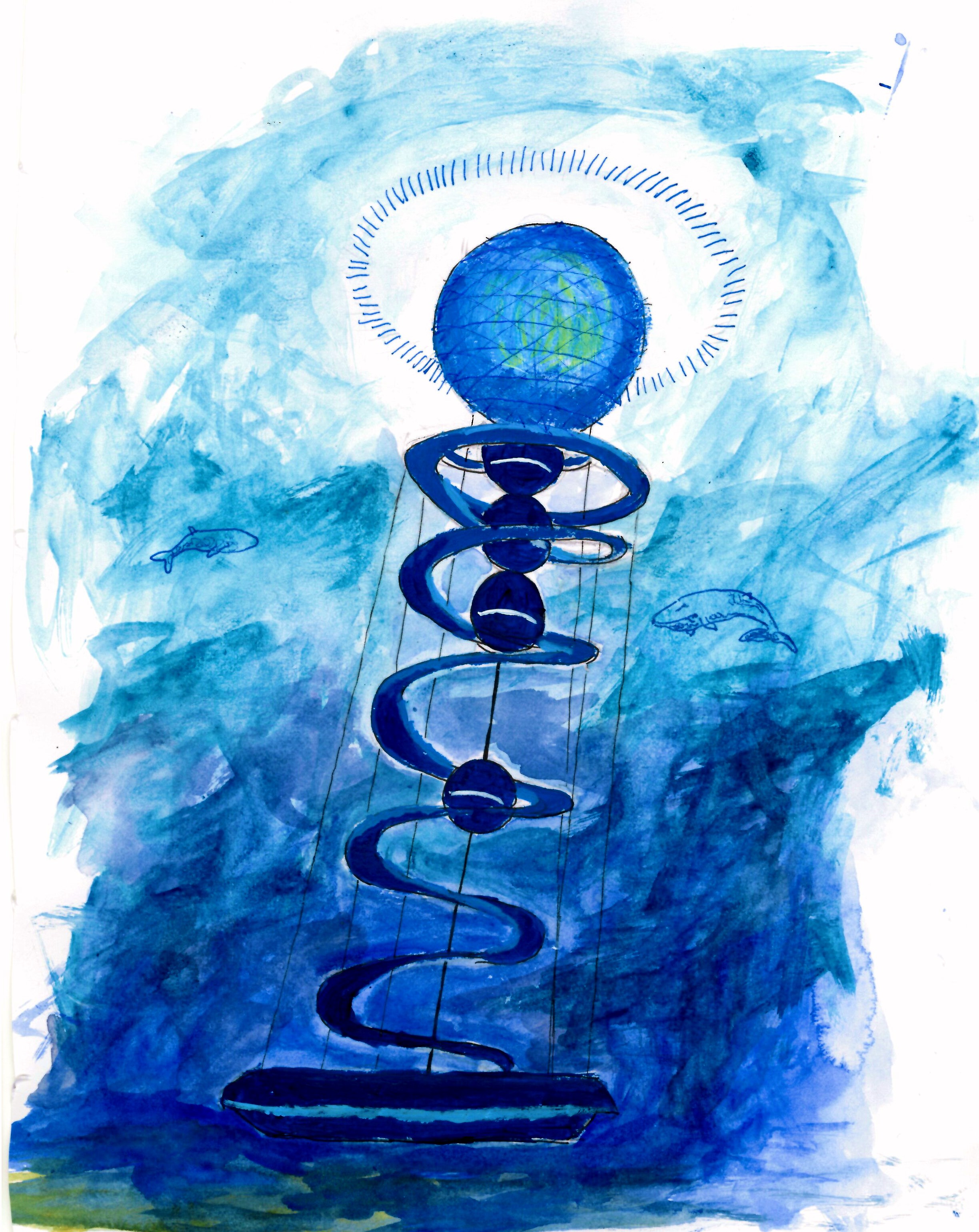
The blueprint of the project shows this residential bubble connected to a large research facility via a spiralling path. The research facility, known as the Earth Factory, will be located between 3,000 and 4,000 metres below the housing sphere, and will allow for mining of natural resources such as zinc and copper. Scientists will also explore possible methods to extract energy from the seabed.
Environment
The creators want to leave as small a carbon footprint as possible, so they are interested in using ocean thermal energy conversion to power the city by having the spiral path covered with custom generators that will harvest energy due to the differences in the temperature of the seawater. Exploiting special microbes that can convert carbon dioxide obtained from the water surface into methane will be another source of energy.
In pursuing the goal of making the facility as self-sufficient as possible, fish farms will be constructed to supply food and there will be desalination technology to supply the inhabitants with fresh drinking water.
Expenses
Such a high-tech Atlantis does not come cheap though, and Shimizu Corp estimates the cost of their project totalling $25 billion (€20.2 bn), which they hope to acquire through government and private industrial funding. However, even if Santa dropped several thousand sackfuls of cold, hard cash under the Christmas Tree of their corporate headquarters later this month, the science and technology required to construct Atlantis 2.0 will not be available until at least 2030, Shimizu estimates.
Not disheartened by this fact, Hideo Imamura, a spokesperson for Shimizu Corp, told The Guardian: “This is a real goal, not a pipe dream. The Astro Boy cartoon character had a mobile phone long before they were actually invented – in the same way, the technology and knowhow we need for this project will become available.”
Other plans
Shimizu is no stranger to the unusual. Many of their “Proposals to Benefit Future Generations” are fairly out of this world. They are also advocates for “space tourism”, with another of their dreams being a Space Hotel. They maintain that even untrained people will be able to stay at the Space Hotel, which is a large structure consisting of an elevator shaft that is 240 metres long, with four functional elements in Low Earth Orbit. Guests would get breath-taking views of Earth, and enjoy meals and even sports under microgravity. The proposed design has 64 guest rooms, with a further 40 staff rooms, in a ring of 140 metre diameter, which rotates at 3rpm to create an artificial gravity 70 percent of Earth’s.
Even further afield, Shimizu envisages creating moon bases, with interconnected hexagonal modules, constructed from concrete produced using the lunar surface. To avoid the risks associated with manned missions, Shimizu plans to use construction robots to build most of the structures.
Such lunar bases would make it easier to construct yet another of their bright ideas, LUNA RING. This is an idea for lunar solar power generation, in a push to move away from limited resources to the virtually unlimited, clean energy from the sun. Shimizu wants to build a ring of solar panels around the lunar equator to absorb the sun rays on the side facing away from Earth, and convert this energy into microwave and laser power on the lunar face nearest Earth. These would be theoretically absorbed at several facilities located around the globe and converted to energy to be used by people.
Many people have begun thinking outside the box when it comes to creating suitable places for humans to live, such as the efforts being made by Mars One to establish a permanent colony on Mars, with the first crews leaving Earth on a one-way journey in 2024.
Illustration: Julia Helmes






